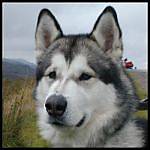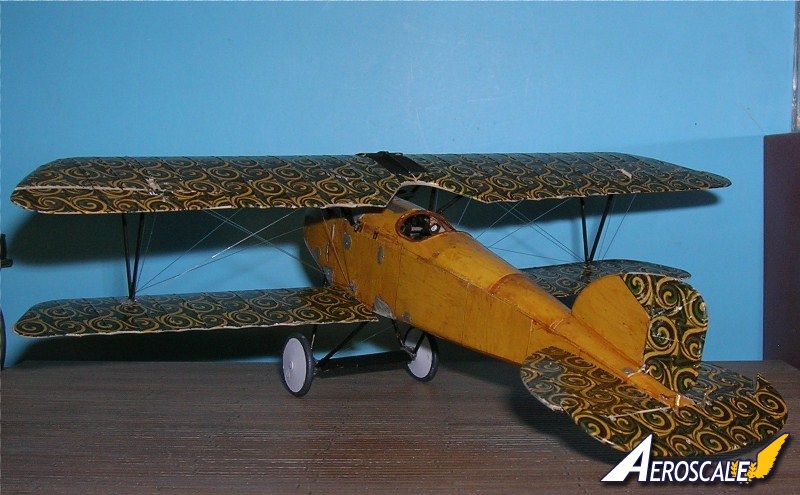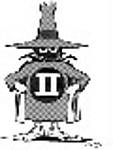Ola Guys and Gals
I have a question. Today I picked up the 1:72 Airfix Albatros DVa. Which is quite a nice kit for such a low price. It comes with 2 decal options which is the D.Va flown by von Richthofen. Which is wood colored with a red tail. And the D.Va flown by Max Nather. Which has a Black fuselage with either a partially red nose or a red nosecone.
I decided to do the Max Nather D.Va for the simple reason that I don't have any woodgrain decals and I'm not confident that I can handpaint it that well. But here comes my question. The airfix kit has raised panellines on the surface. Which is not correct. So I'm going to sand those smooth. But that leaves we with the subject of the panellines. As I have found that the Albatros' fuselage was made of plywood. Which no doubt was laquered smooth. I checked pictures of real D.Va online and even those 1:1 aircraft do not really show much in the way of panel lines. Would the fuselage of the 1:72 D.Va be smooth and is it simply a matter of spraying it black? or do I have to rescribe the panellines?
Your views on this matter would be greatly appreciated.
With friendly greetz
Robert Blokker
Early Aviation
Discuss World War I and the early years of aviation thru 1934.
Discuss World War I and the early years of aviation thru 1934.
Hosted by Jim Starkweather
Q: Panellines on the 1:72 Albatros D.Va
Posted: Saturday, May 18, 2013 - 09:53 AM UTC

Kornbeef

Joined: November 06, 2005
KitMaker: 1,667 posts
AeroScale: 1,551 posts

Posted: Saturday, May 18, 2013 - 06:58 PM UTC
IMHO you would have no need to rescribe, as you say the fuselages were finished to a quite smooth finish even at 1/32 the panels are often over done I think. But at the end of the day would woodgrain be visible at such a small scale too?
At the end of the day its a matter of personal preference but if you do rescribe the panel lines less is better than deep gouges

At the end of the day its a matter of personal preference but if you do rescribe the panel lines less is better than deep gouges


JackFlash

Joined: January 25, 2004
KitMaker: 11,669 posts
AeroScale: 11,011 posts

Posted: Sunday, May 19, 2013 - 04:12 AM UTC
Quoted Text
IMHO you would have no need to rescribe, as you say the fuselages were finished to a quite smooth finish even at 1/32 the panels are often over done I think. But at the end of the day would woodgrain be visible at such a small scale too?
At the end of the day its a matter of personal preference but if you do rescribe the panel lines less is better than deep gouges

I think Keith has a good point of view on this subject.
See thread here.
Each panel would be slighly different in grain. But, the panel lines are designed to be flush with each other.


If you do decide to do Nšther's D.Va, the all black fuselage might do with sanding down a bit and then use a black with a few drops of slate grey mixed. If you use just straight black, details will get lost especially in 1:72.
By the way MvR flew several of the D.V operationally. He was not assigned the D.Va. He did not gain any victories in one either. The profile you mention is an early D.V types he was wounded in on July 6, 1917. The D.Va did not arrive until fall of 1917.
Posted: Sunday, May 19, 2013 - 07:16 AM UTC
Ola Guys
Thanks for your input.
@ Keith
You are right. Woodgrain would not be very visible at that scale but I guess if you don't do it the model will look.. well... like a model instead of a scale representation of the real thing. I think what you mostly are left with of woodgrain when scaled down is different shades and hues.
I Always thought the same about the panellines. Even in 1:35 armor this is usually overdone.
But your answer is a good one which confirms for me that I can simply sand down the raised panellines and go from there with paint.
@ Stephen
Thanks for your reply as well. A really usefull link you posted as well. Read through the whole thread. I wish all the armor articles were written like that as well. Very complete. I also found the links Compiled by Rowan on painting woodgrain. I kinda use a similar technique but for me oils work better.
Thanks by the way for that extra bit of info about the Albatrosses of Von Richthofen. I'm still at that stage where I mostly follow the instruction sheet. I currently own 1 book and it deals with Von Richthofens Flying circus and that hardly makes me an expert. With the plane of Nather I was already planning to first lay a base of black and highlight/modulate it lightly with a grey creating a more anthracite look. And on the subject of that. Is it odd if I do that with every panel separately. This is as you guys may know quite a custom in armor modelling but since there are more angles on a vehicle as opposed to an aircraft it works. And I fear that if I do that on an aircraft it will look like a leopard or a giraffe. What are your ideas on that?
Thanks for your input.
@ Keith
You are right. Woodgrain would not be very visible at that scale but I guess if you don't do it the model will look.. well... like a model instead of a scale representation of the real thing. I think what you mostly are left with of woodgrain when scaled down is different shades and hues.
I Always thought the same about the panellines. Even in 1:35 armor this is usually overdone.
But your answer is a good one which confirms for me that I can simply sand down the raised panellines and go from there with paint.
@ Stephen
Thanks for your reply as well. A really usefull link you posted as well. Read through the whole thread. I wish all the armor articles were written like that as well. Very complete. I also found the links Compiled by Rowan on painting woodgrain. I kinda use a similar technique but for me oils work better.
Thanks by the way for that extra bit of info about the Albatrosses of Von Richthofen. I'm still at that stage where I mostly follow the instruction sheet. I currently own 1 book and it deals with Von Richthofens Flying circus and that hardly makes me an expert. With the plane of Nather I was already planning to first lay a base of black and highlight/modulate it lightly with a grey creating a more anthracite look. And on the subject of that. Is it odd if I do that with every panel separately. This is as you guys may know quite a custom in armor modelling but since there are more angles on a vehicle as opposed to an aircraft it works. And I fear that if I do that on an aircraft it will look like a leopard or a giraffe. What are your ideas on that?

JackFlash

Joined: January 25, 2004
KitMaker: 11,669 posts
AeroScale: 11,011 posts

Posted: Sunday, May 19, 2013 - 09:48 AM UTC
Quoted Text
'. . .I was already planning to first lay a base of black and highlight/modulate it lightly with a grey creating a more anthracite look. And on the subject of that. Is it odd if I do that with every panel separately. This is as you guys may know quite a custom in armor modelling but since there are more angles on a vehicle as opposed to an aircraft it works. And I fear that if I do that on an aircraft it will look like a leopard or a giraffe. What are your ideas on that?"
In my opinion, if done in a subued effort it might make an interesting look. Just consider adding an over all semi-gloss coat to keep the shine down and unify the work. Try it on scrap plastic first.
Posted: Sunday, May 19, 2013 - 11:02 AM UTC
Robert, I don't mean to hijack your thread, but I was wondering what is the difference between a DV and a DVa?
Following with interest as I have 2 of those in the stash. The Airfix Hannover is another nice kit and a great place to use all those spare bits from Roden, but it is a pain in the a*s to paint.
Following with interest as I have 2 of those in the stash. The Airfix Hannover is another nice kit and a great place to use all those spare bits from Roden, but it is a pain in the a*s to paint.

Jessie_C


Joined: September 03, 2009
KitMaker: 6,965 posts
AeroScale: 6,247 posts

Posted: Sunday, May 19, 2013 - 01:12 PM UTC
The major difference is the aileron control mechanism. The D.V aileron control wires ran through the upper wing to a pair of bell cranks at the aileron hinges. These are important for modellers as a recognition point. The other difference is a large headrest, but this is not as good a recognition point because it was often removed in service.
The D.Va reverted to the same kind of aileron control system used in the D.III which ran through the lower wing with cables leading up to the aileron behind the struts.
So if there are aileron control fairings top and bottom on the upper wing, it's a D.V.

If there are aileron control cables visible between the lower and upper wings, it's a D.Va
.jpg)
The D.Va reverted to the same kind of aileron control system used in the D.III which ran through the lower wing with cables leading up to the aileron behind the struts.
So if there are aileron control fairings top and bottom on the upper wing, it's a D.V.

If there are aileron control cables visible between the lower and upper wings, it's a D.Va
.jpg)

JackFlash

Joined: January 25, 2004
KitMaker: 11,669 posts
AeroScale: 11,011 posts

Posted: Sunday, May 19, 2013 - 06:45 PM UTC
Visibly that is about right. Thought the D.Va did start having the Merc. D.IIIaŁ 180hp installed. The D.V had the D.IIIa 170hp. The controls within the cockpit had to be a bit different too. The aileron control points on the control column to be specific. Check out the reviews on some of the available kits (Eduard & WNW) for other differences. Head rests & reinforcement plates on the early D.V etc etc.
 |















